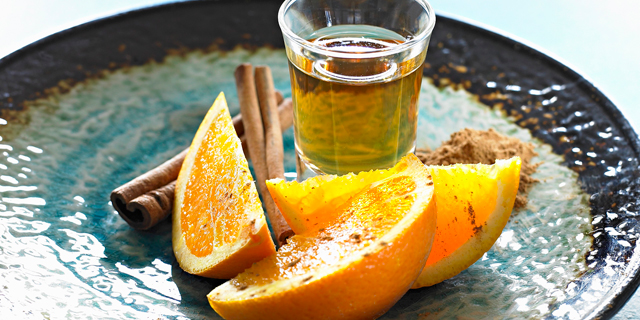About five years ago, on a trip through Mexico, I fell in love with something that most people in the U.S. associate with hangovers and havoc wreaked: mezcal. Flash forward to New York City, 2013. Most respectable cocktail bars now boast at least one type of artisanal mezcal, bottled and branded both for Brooklyn beardos and investment-banking bon vivants and, for the most part, sans the Oaxacan worm that has been long associated with the spirit.
So how did mezcal, with its intense history, recommended, in a popular Oaxacan saying, “por todo mal” and “por todo bien, tambien” make it’s way from the campos of various Mexican states into cocktails with names like “The Spitfire”? And where has it been hiding while we have been forced to drink the less flavorful, not-as-nuanced star of margaritas, tequila? (No offense tequila, you’ve got some great representatives). In fact, tequila is technically a mezcal. It merely has an AOC like Champagne. Only mezcals produced in the town of Tequila, in the state of Jalisco, with 100% blue Weber agave can be classified as tequilas. Most mezcals are made with different varietals of maguey (agave) plants.
In order to break down what to look for and where to find it, I enlistied a bit of help. My first stop was Casa Mezcal on the Lower East Side of New York City where acclaimed Mexican artist Guillermo Olguin and business partner Ignacio Carballido have built a three-floor shrine of sorts to the smoky and sexy spirit.
[ pagebreak ]
Where there’s smoke: One thing that steers me towards mezcal is the smoke; I’m a Scotch drinker and pimenton sprinkler. Production of the majority of mezcals (unlike tequilas) still employs a 3-day process of smoking the maguey hearts, called “piñas” because they look like giant pineapples, in a massive earthen pit. After this, they are crushed and fermented with a tiny bit of water before distillation.
With tequila, the hearts are steamed in stainless steel vats. Several mezcals have followed suit, many of them hoping to compete for markets outside of Mexico by providing a more neutral flavor. I prefer the smoky mezcals, but regardless of preference, just make sure you are getting a mezcal made with 100% maguey/agave. Considering it takes the agave plant about seven years to produce a piña, most production is small scale. Good mezcal is pricey, for good reason.
Varietals? Terroir? Really?: Yes, there are many varietals used by mezcaleros, many of whom are dedicated to the preservation and re-population of the areas where magueys are found, especially when it comes to wild types. Look for the word “silvestre” which means wild, as these magueys all have distinct characteristics. There are also some beautiful single-village mezcals that truly reflect the terroir of where they are produced. I recommend you try as many as you can from the wild and fruity tobala to the classic and cultivated espadîn (spear).
Mezcal is strong stuff, usually hovering at about 80 proof. To really enjoy and understand it, most mezcal aficionados would recommend sipping it, neat. If you are a cocktail person or just the teeniest bit scared, then you can introduce mezcal as a float on your margarita or gimlet.
Age matters: Like other spirits, mezcal, is either bottled young “joven,” or aged after being distilled. Reposado refers to mezcals that have been aged in wood barrels for between two months and nine months and añejo is aged for at least one year, sometimes up to twelve years. If you’re up for trying a flight of mezcals I would say start with some jovens and work your way up to the añejos.
Thirsty? Two great mezcal recipes await on the next page.
[ pagebreak ]
Julian Medina’s Mezcalita de Pina
- 2 ounces Pierde Almas Mezcal
- 1 1/2 ounces lime juice
- 3/4 ounce agave syrup
- 2 pieces pineapple, grilled
- 3/4 bar spoon jalapeño, finely chopped
- 4 leaves cilantro
- 1 pinch tajin spice (and to garnish on rim)
- cilantro sprig
- 1 1/2 ounces Los Amantes Mezcal Reposado
- 1/2 ounce Roi Rene (cherry liqueur)
- 1/2 ounce Aperol (aperitivo liquer)
- 1/2 ounce Antica vermouth
- 2 dashes bitters
- 1 strip orange peel




![Making Mealtime Matter with La Familia: Easy Sofrito [Video]](https://thelatinkitchen.com/wp-content/uploads/2015/10/sofrito-shutterstock__0-500x383.jpg)
![Easy Latin Smoothies: Goji Berry Smoothie [Video]](https://thelatinkitchen.com/wp-content/uploads/2015/12/goji_berry-shutterstock_-500x383.jpg)
















![Fun and Fast Recipes: Fiesta Cabbage Salad [Video]](https://thelatinkitchen.com/wp-content/uploads/2015/11/fiesta_cabbage_slaw-shutterstock_-500x383.jpg)









